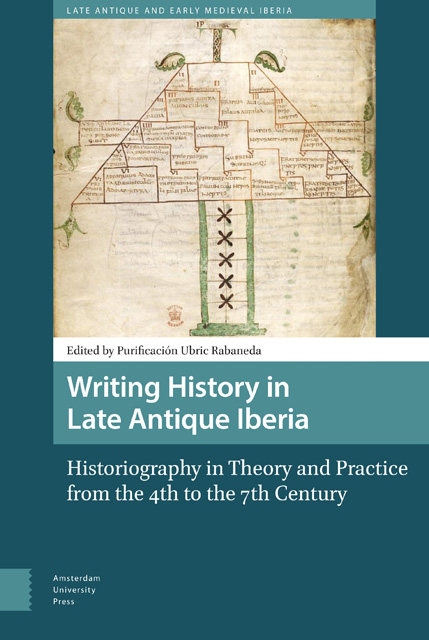 Writing History in Late Antique Iberia
Writing History in Late Antique Iberia Published online by Cambridge University Press: 18 April 2023
Abstract
The Arian controversy, which, at the beginning, was nothing but a theological debate around the figure of Christ, very soon became the identity flag of the most important ecclesial factions of the fourth century. Although ideologically very close to the victorious Catholic faction, the authors of the Libellus precum lament the moral degradation of the victors and the opportunism of countless heretical clerics who have not hesitated to join the winning side. The faithful to the true doctrine, in whose name the Libellus is written, ask for protection from the emperor Theodosius, appealing to a social and religious past that they reconstruct from their peculiar and interested point of view, with abundant illustrations, positive and negative, of the Hispanic Church.
Keywords: Arian controversy, Luciferians, reconstruction of the past, persecution, rigorist
Although numerous sources exist from the second half of the fourth century that show concern for the situation in the Church in Hispania, perhaps the most passionate and eloquent is the Libellus precum by Faustinus and Marcellinus (hereafter, LP) In a particularly harsh manner, the authors detailed and denounced the opportunism, ambition, and worldly interests of many clerics who falsely proclaimed themselves as Catholics and, at the same time, persecuted those who remained faithful to the Nicene Creed with unusual cruelty. In a previous work, I described the verisimilitude of the events chronicled in the LP in the style of a pleading brief presented at court, and formally addressed to the three reigning emperors at that time (Valentinian II, Theodosius, and Arcadius). The authenticity of the story is also supported by the rescript, or Lex augusta (hereafter, LA), which offered an official response to the libellus , taking the truth and the seriousness of its content for granted.
Perhaps the most original aspect of this text is its recalling of the historical past in order to explain the current situation, particularly the doctrinal rectitude of some Nicenist loyals, who were unjustly persecuted by Catholic opportunists. To this end, its story highlights the most favourable events in their cause, and silences others that could have done it harm. The result could only be a particular reworking of the past, as we aim to show in the following pages.
To save this book to your Kindle, first ensure [email protected] is added to your Approved Personal Document E-mail List under your Personal Document Settings on the Manage Your Content and Devices page of your Amazon account. Then enter the ‘name’ part of your Kindle email address below. Find out more about saving to your Kindle.
Note you can select to save to either the @free.kindle.com or @kindle.com variations. ‘@free.kindle.com’ emails are free but can only be saved to your device when it is connected to wi-fi. ‘@kindle.com’ emails can be delivered even when you are not connected to wi-fi, but note that service fees apply.
Find out more about the Kindle Personal Document Service.
To save content items to your account, please confirm that you agree to abide by our usage policies. If this is the first time you use this feature, you will be asked to authorise Cambridge Core to connect with your account. Find out more about saving content to Dropbox.
To save content items to your account, please confirm that you agree to abide by our usage policies. If this is the first time you use this feature, you will be asked to authorise Cambridge Core to connect with your account. Find out more about saving content to Google Drive.